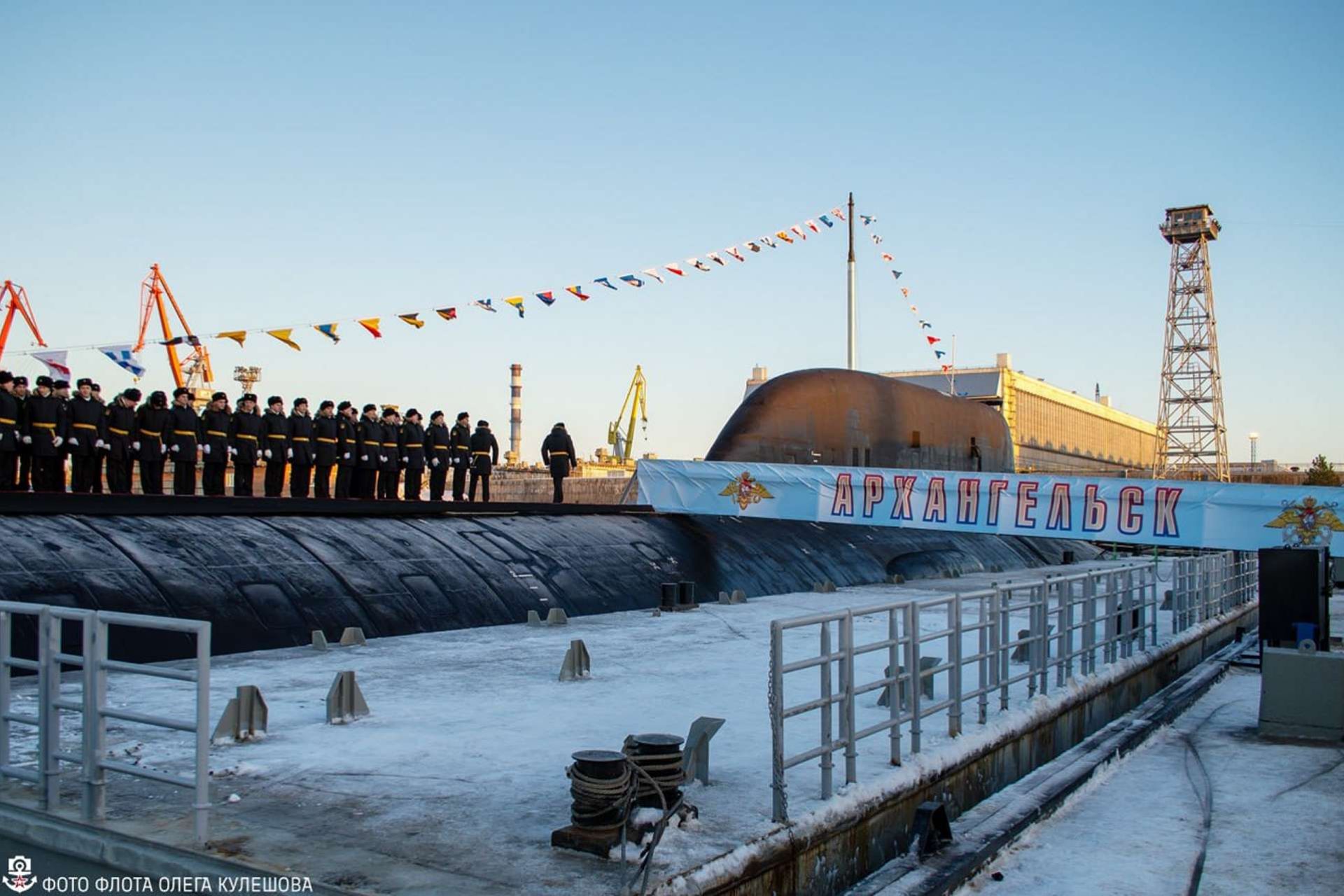Breaking News
Russia’s Nuclear Submarine Fleet Grows with Arkhangelsk.
According to information published by Tass on December 27, 2024, the Russian Navy has officially commissioned its latest nuclear-powered submarine, the Arkhangelsk, of the modernized Project 885M Yasen-M class. The flag was hoisted on the vessel’s mast, symbolizing its readiness to serve in the Russian Navy's submarine fleet.
Follow Army Recognition on Google News at this link

Commissioning ceremony of the Russian Navy's Yasen-M class submarine Arkhangelsk. (Picture source: Oleg Kuleshov)
The submarine becomes the third serial vessel in the Yasen-M line. The "Arkhangelsk" was officially launched on November 29, 2023, and is the 141st nuclear-powered submarine built at Sevmash, a shipbuilding facility under the United Shipbuilding Corporation (USC). The design and development of the submarine were spearheaded by the Malachite Design Bureau in St. Petersburg.
Four additional Yasen-M submarines—Perm, Ulyanovsk, Voronezh, and Vladivostok—are at various stages of construction and will soon join the fleet. Currently, four Yasen-class submarines, Severodvinsk, Kazan, Novosibirsk, and Krasnoyarsk, are operational within the Russian Navy. The success of the lead submarine, Kazan, during its recent mission to Cuba demonstrated the effectiveness of the Yasen-M class in maintaining Russian naval presence in global waters.
Russian submarine Fleet
The Russian submarine fleet comprises several categories of submarines, each serving specific roles. Nuclear-powered ballistic missile submarines are the backbone of Russia’s strategic deterrent, carrying intercontinental ballistic missiles. The Borei-class, featuring modern designs, quieter propulsion systems, and capable of carrying 16 Bulava ICBMs, represents the latest in this category, while older Delta IV-class submarines provide additional strategic depth.
Nuclear-powered attack submarines are designed for hunting enemy submarines and surface ships and can carry cruise missiles for land-attack roles. The Yasen-class is Russia’s most advanced attack submarine, with stealth features and a versatile weapon suite, including Kalibr and Oniks cruise missiles. Other classes, like the Akula and Oscar II, also contribute to this capability, with the latter notable for its anti-ship Granit missiles.
Diesel-electric attack submarines, primarily used for coastal defense and littoral operations, are quieter than their nuclear counterparts. The Kilo-class, known for its low acoustic signature, is widely deployed, while the Lada-class represents a new generation of diesel-electric submarines with advanced air-independent propulsion.
Russia also operates specialized and auxiliary submarines, such as the Belgorod, a modified Oscar II-class submarine designed to carry the Poseidon nuclear-powered underwater drone. The fleet includes smaller submarines for covert missions, underwater cable interference, and seabed research.
Strategic deterrence is achieved through regular patrols by ballistic missile submarines in Arctic waters and the North Atlantic, ensuring survivable second-strike capability in the event of a nuclear conflict. Borei-class submarines operate under the protection of the Northern Fleet’s Arctic bastions, leveraging the region’s geographic advantages.
Attack submarines, particularly the Yasen-class, bolster Russia’s anti-access/area denial strategy by targeting NATO carrier strike groups and maritime logistics. Diesel-electric submarines, like the Kilo-class, enhance this capability in enclosed seas such as the Baltic.
Russian submarines have been used in conflict zones, such as the Eastern Mediterranean during the Syrian Civil War, to launch precision strikes with Kalibr cruise missiles.


























